Exhibition place:Textile Conservation Gallery, China National Silk Museum
Exhibition time:2020.12 - 2021.3
No matter how much the fashion industry evolves, white always dominates wedding dresses, a tradition that began when Queen Victoria’s wedding dress made white gowns prevalent in the mid-19th century.
Forty vintage wedding gowns from the 19th century to the 1950s are on display at the China National Silk Museum through March 14.
Prior to Queen Victoria’s time, Western nobility favored silvery wedding dresses, an d middle-class women preferred colorful silk gowns.
These luxury dresses have faded into a beige-like color, but their quality tells visitors they were once exclusive to the upper class.
From the 1860s to the 1920s, corsets were used in wedding dresses to accentuate or even exaggerate the curves of a woman’s upper body.
One of the exhibit’s wedding gowns was designed in the shape of an hourglass, reflecting the aesthetics of the time. During this period, people used pearls, as well as golden an d silvery embroidered patterns, to decorate dresses, which gradually gained popularity in the West.
As the fashion industry developed, looms made it possible to produce lace in large quantities, an d lace-decorated dresses were common at the beginning of the 20th century.
A breakthrough in the fashion industry took place in the 1920s when Coco Chanel designed a range of glamorous haute couture in black an d white.
Fashion designers removed traditional corsets an d bustles from wedding dresses, creating a new style that highlighted the waistline.
Some wedding gowns were revolutionary, characterized by a small, nipped-in waist an d full skirt extending below the ankles, which emphasized women’s busts an d hips.
These wedding gowns gradually developed into evening dresses popular with trendsetters, including Grace Kelly, Marilyn Monroe an d Audrey Hepburn.
As more women followed this trend, wearing this style of dress found its way into wedding ceremonies.

2019.27.8
Silk satin wedding dress(British)
1830-1832
A British silk satin wedding dress made in the time of Queen Victoria is supported by a bustle in the back below the waist to expan d the skirt with puffed sleeves an d wrinkles cuffs.

2014.1.223
Wedding dress
1840-1860s

2014.1.37360
Wedding shoes
1850-1860s

2014.1.2337
Wedding vest /婚礼马甲
mid-19th centry
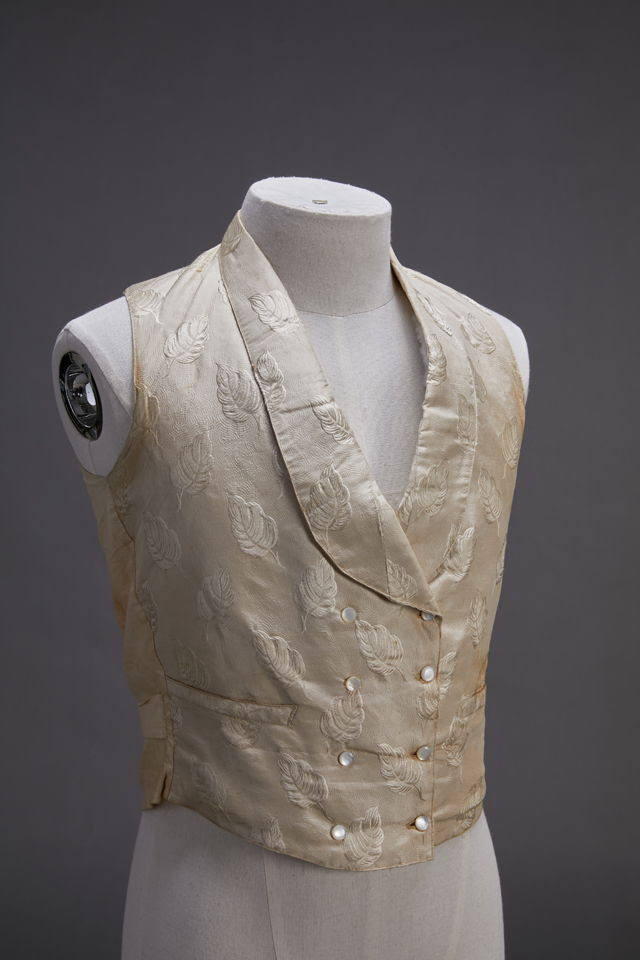
2014.1.2340
Wedding vest
mid-19th centry

2014.1.36352
Wedding dress
1870-1880

2014.1.36352
Wedding dress
1870-1880
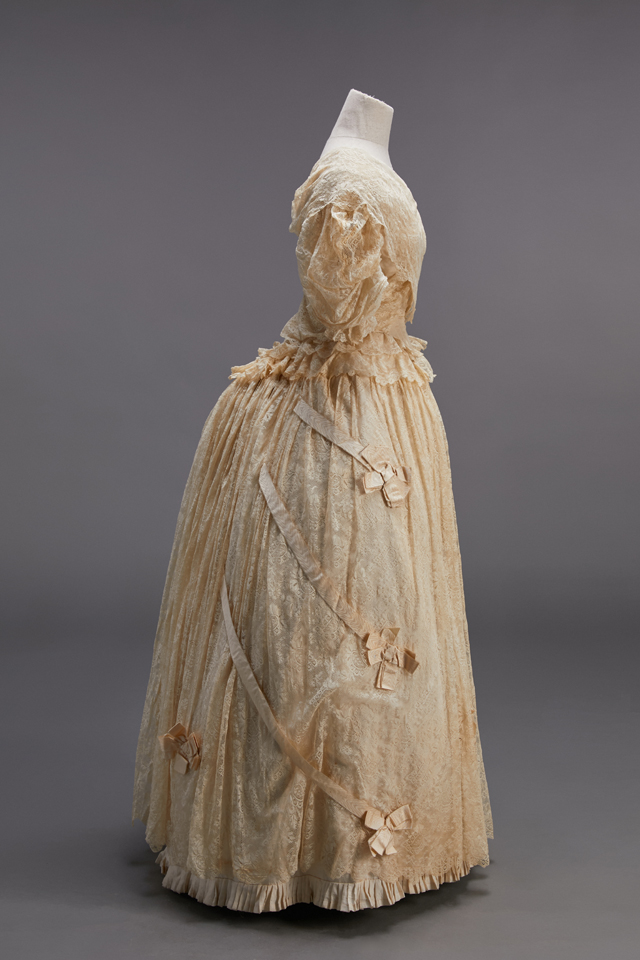
2014.1.36353
Wedding dress
1880-1890
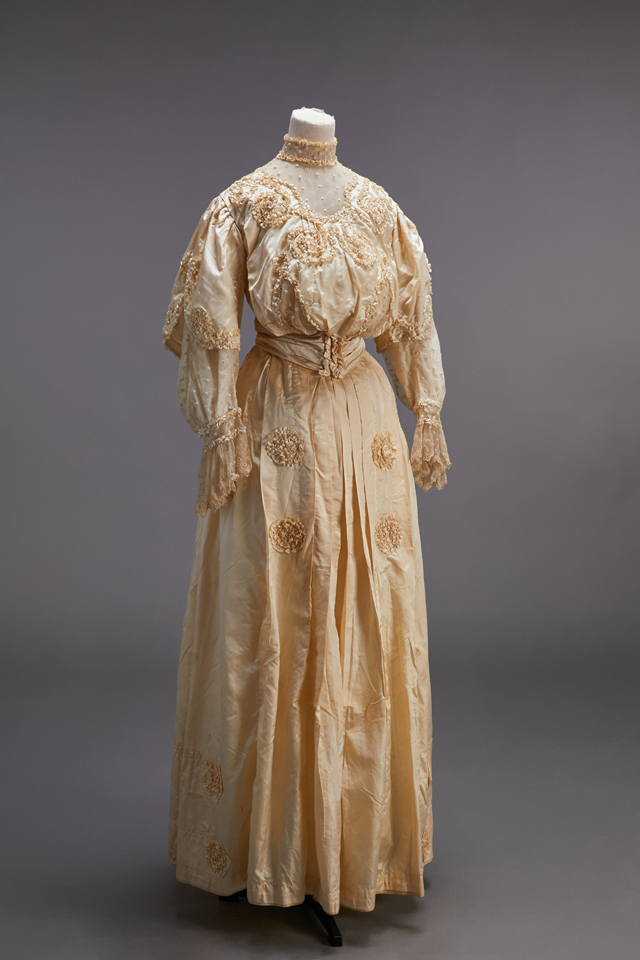
2014.1.37047
Wedding dress
1890-1900

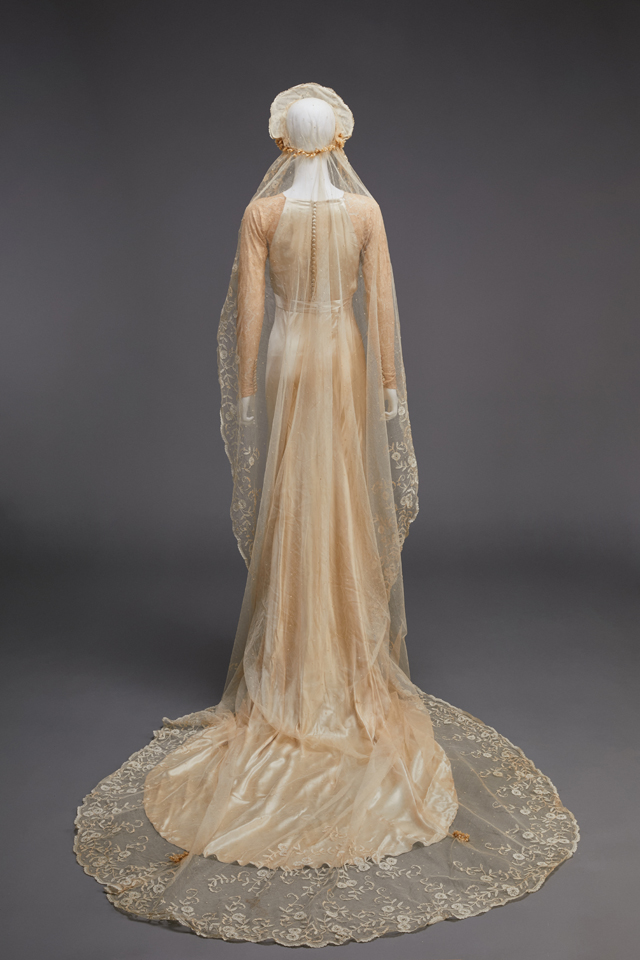
2014.1.10163 2014.1.10165
Bridal veil
1920-1950s
Long-lace bridal veils an d wreaths make this wedding dress more romantic an d mild. Floral lace patterns are widely used on cuffs, corsages an d shoulder parts at the beginning of the 20th century.

2014.1.10156
Wedding wreath
1920-1950s
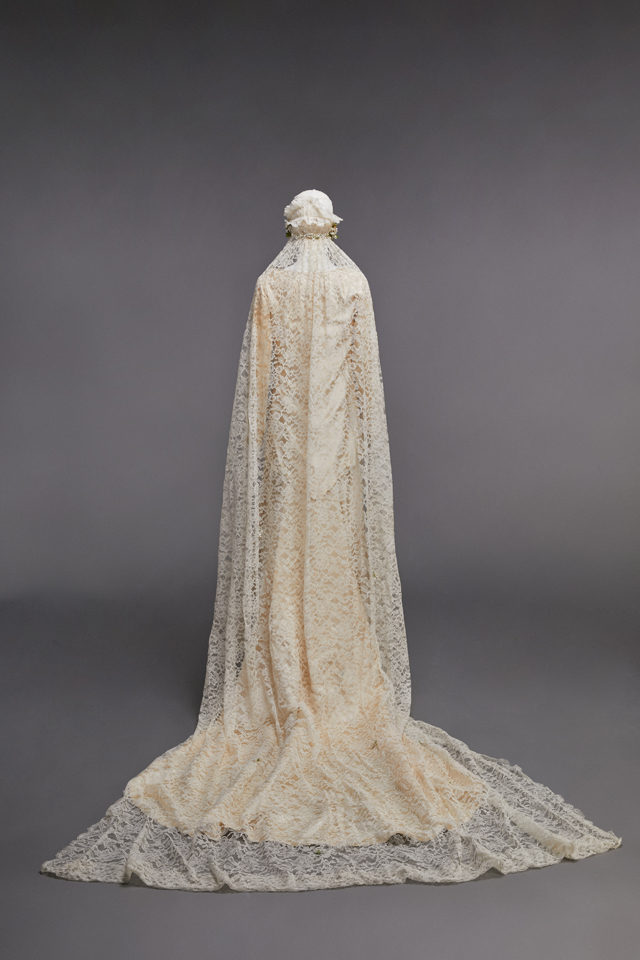
2014.1.36354
Bridal veil
1920-1930s

2014.1.44
Wedding dress
1930s
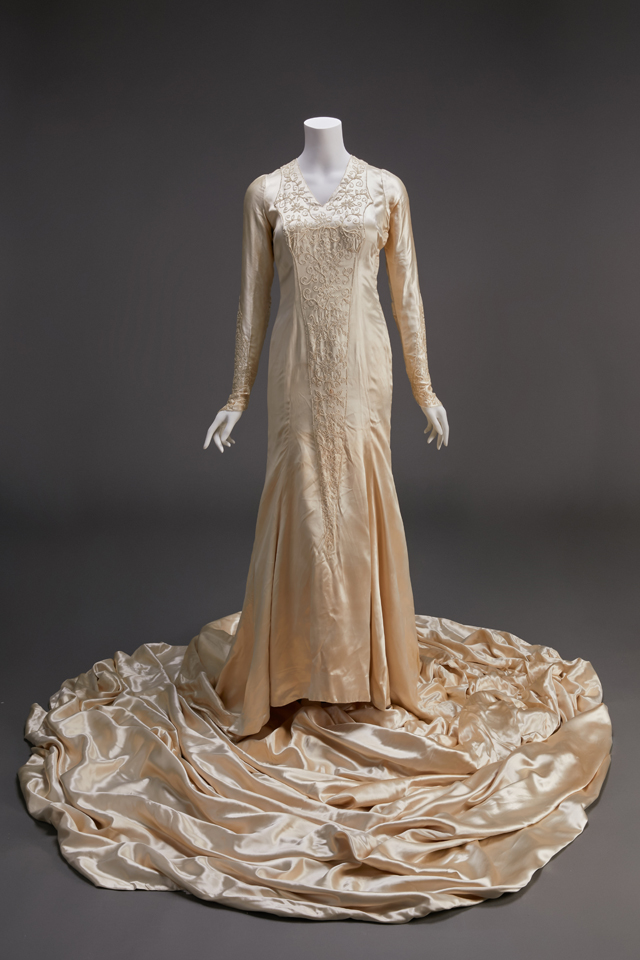
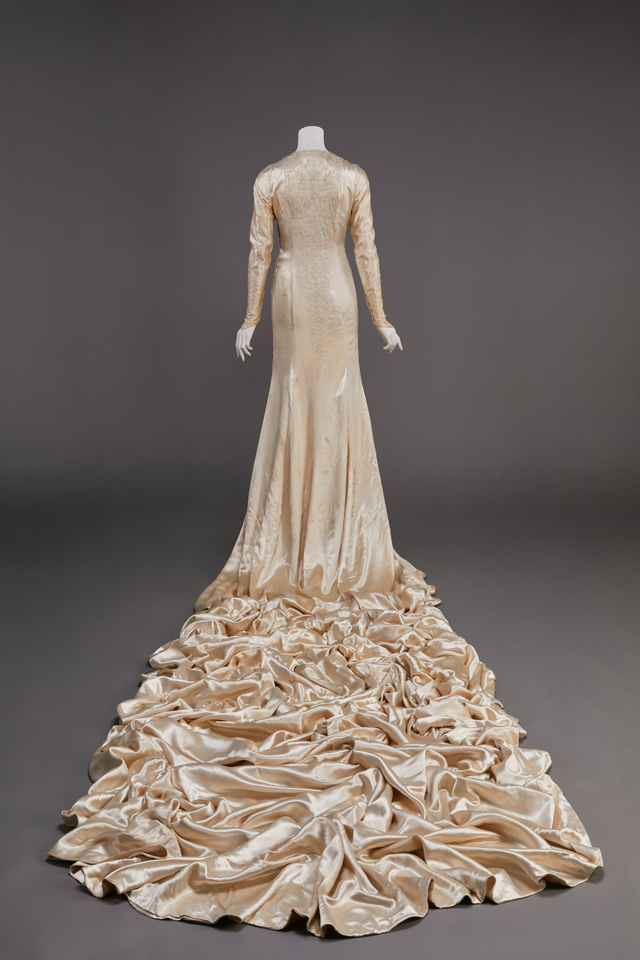
2014.1.46
Wedding dress
Designer:Sally Milgrim(1898-1994)
1930-1940s
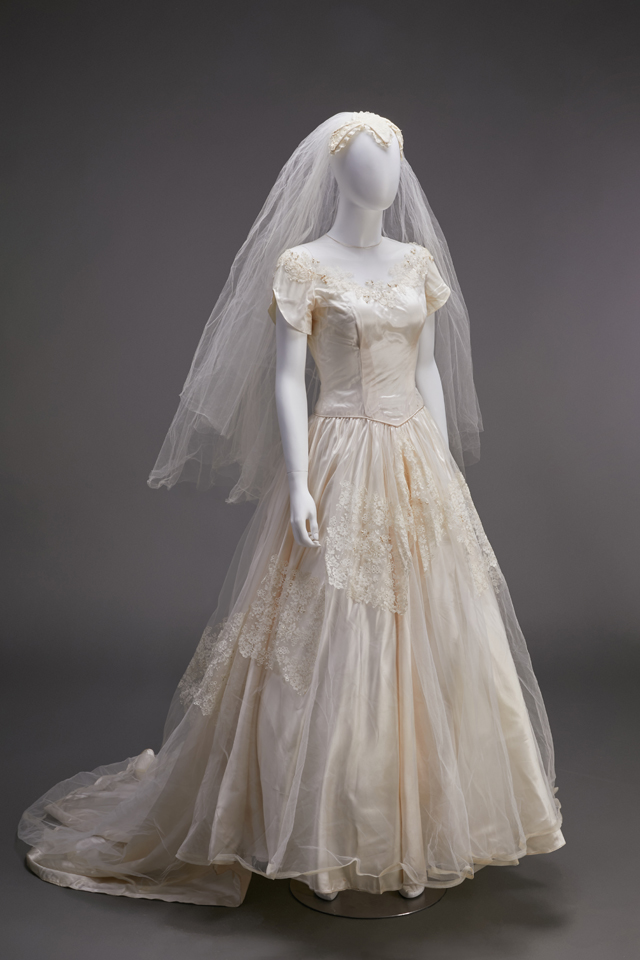
2014.1.10
Wedding dress
Designer:Priscilla Kidder(1916-2003)
1950s
Bran d:Priscilla of Boston
 Pay attention to us
×
Pay attention to us
×